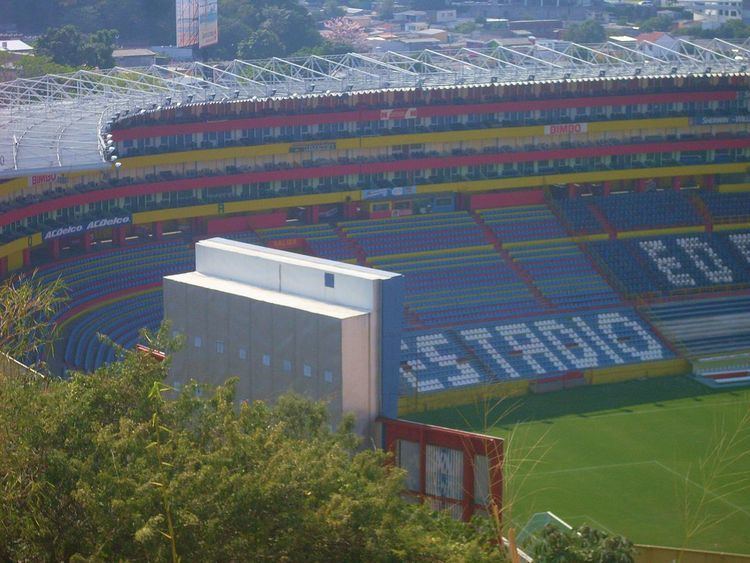Owner EDESSA Record attendance 55,000 Capacity 53,400 Phone +503 2510 0500 | Operator EDESSA Field size 107 x 68.5 Opened 24 July 1976 | |
 | ||
Full name Monumental Estadio Cuscatlan Similar Estadio Jorge "Mágico, Estadio Óscar Quiteño, Estadio Juan Francisco, Estadio Las Delicias, Estadio Jorge Calero S Profiles | ||
El estadio cuscatl n listo para nuevas historias
The Estadio Cuscatlán is a football stadium located in San Salvador, El Salvador. It is the largest stadium in Central America with a capacity of 53,400 The stadium is the home ground of the El Salvador national football team
Contents
- El estadio cuscatl n listo para nuevas historias
- Disturbios en estadio cuscatl n alianza vrs drag n
- History
- The stadium
- Facilities and capacity
- The grounds
- Events
- References
Disturbios en estadio cuscatl n alianza vrs drag n
History
Cuscatlán stadium was first developed as a replacement to what at the time was El Salvador's largest stadium, Estadio Nacional de la Flor Blanca (now known as Estadio Jorge "Mágico" González). Its creation was made possible by EDESSA (Estadios Deportivos de El Salvador) who in 1969 first proposed the idea of a new national stadium.
Construction began on March 24, 1971, with then-president of El Salvador General Fidel Sánchez Hernández laying the first stone. After 5 years of building, the stadium was opened and held its very first game on July 24, 1976. This day saw German Bundesliga champions Borussia Mönchengladbach play the El Salvador national team, with the match ending 2–0 to the German side.
On May 25, 1978, EDESSA agreed to and signed a 99-year lease of the stadium to CLIMA (Asociación de Clubes de Liga Mayor A'). As a result, CLIMA is now the operator of the stadium, and controls what events are held there.
The stadium
The stadium, with a capacity of 53,400 is the largest football venue in Central America.
It was announced on November 16, 2007 that Estadio Cuscatlán would become the first football stadium in Central America and Caribbean to have a large LED screen where the supporters can view the action. The screen is 40 meters in height and width and was completed in March 2008.
The modernization also extends to the pitch, which includes:
Facilities and capacity
The stadium's capacity has been the topic of much dispute, with many saying that its official capacity is not accurate. As the stadium only has seats available in certain sections, it is difficult to estimate the maximum capacity when trying to take into account how many spectators could fit into the sections without seats. The seating capacity is between a range of 53,400 and 45,000 people. FIFA regulates the capacity, setting a limit to about 45,000 maximum.
The stadium has the following distribution on their premises:
The grounds
The stadium itself sits on an area of land roughly 15 square blocks (30 hectares) in size. Not only does it accommodate the stadium itself, with its parking lot (8,500 cars capacity), but also two other football pitches. One of these is used for training by club sides, to limit damage to the stadium ground itself. The other ground is used for junior football. A beach soccer field is set to be built within the next months, the main idea is becoming Estadio Cuscatlán a sport venue.
Events
Although Cuscatlán stadium was primarily built to be just a football stadium, it is now also used to cater for other events. Apart from football, it is also used for concerts, cultural events, religious events and political rallies. In 2005, Colgate broke the World Record of most people brushing their teeth at the same time in this stadium.
